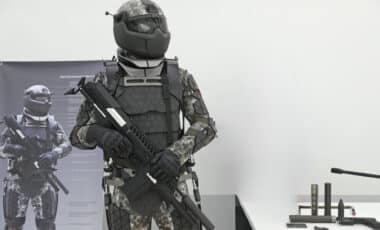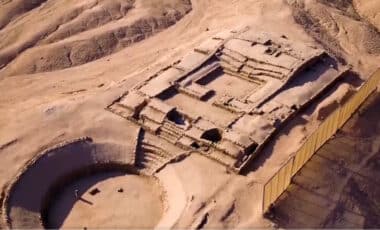HOW STALIN’S ZHUK (‘the Beetle’) CREATED FIVE HIGH MILITARY COMMANDS TO SAVEMOSCOW, RUSSIA, AND EUROPE FROM HITLER AND HIS ODIOUS NAZISM
“In war,” Napoleon said, “it is not men, but the man who counts.”
Reviewed and highly recommended by Don DeNevi“THE SOVIET ARMY’s HIGH COMMANDS IN WAR AND PEACE, 1941 – 1992”, by Richard WHarrison. Casemate Publishers: 452 pages, hc; 2022, $45. See: www.casematepublishers.com;
email, casemate@casematepublishers.com; telephone, (610) 853-9131.
Should the reader entertain this hardcover in hand, the first Hero of the Soviet Union to stepfrom the pages to greet you will be Georgi Zhukov (1896 – 1974). Watch him carefully, forthere, three feet away, is one of the key generals of the Allied Victory in Europe, the keygeneral in saving Moscow, and the key general of all the Russian Chiefs of General Staff. Aftersix years of struggle when the most powerful armies on earth clashed face to face, a handful ofnonpareil strategists surfaced, Allied and German, General Zhukov standing shoulder toshoulder with two others.Simultaneously, ponder the portrait photographs on the handsome red book jacket, eachassigned the enormous responsibility of administering one of five High Commands, theNorthwestern, Western, Southwestern, North Caucasus, and Far Eastern. All the generals weretitled Commanders-In-Chief, Marshals of the Soviet Union, and, honored previously, as Heroesof the Soviet Union.Meet them: on the cover, back row, two, left to right, Western High Commander, SemyouKonstantinovich Tymoshenko; Northwestern High Commander, Kliment YefremovichVoroshilov. Slightly ahead, in a larger portrait, on the right edge, Chief of Staff and co-WesternHigh Commander, G.K. Zhukov. Front row, two, left to right, Far Eastern Commander, AlexanderMikhailovich Vasilevsky; and, front row, second from left, Southwestern- North Caucasus HighCommander, Semyon Mikhailov Budyonny. It was in January of 1941 that Stalin appointed
Zhukov Chief of the General Staff.
Sadly, the highly unfavorable strategic situations during the first year of the war, as well as theinterference by Stalin in day-to-day operations, never as annoying and ill-fated as Hitler’s,severely limited the effectiveness of all the High Commands, individually and collectively.Consequently, the High Commands were abolished in mid-1942, and replaced by the moreflexible system of supreme command representatives at the front.The vast distances involved in fighting Nazi Germany forced Stalin and his political leadership toresort to new organizational expedients to control operations along the extended front. Thesolution was the High Commands, each responsible for two or more fronts, or army groups, andalong maritime axes, one or more fleets. These were short lived on the Eastern Front, but theHigh Command established in the Far East in 1945 oversaw the Red Army’s highly effectivecampaign against Japanese forces in Manchuria and would be resurrected to address risingtensions in that part of Asia near the Soviet border. Later, in the 1980s, new High Commandswere created in Europe and South Asia.With the invasion of Russia by Germany on the morning of 22 June 1941, one wondered howthe five Commanders-In-Chief, Marshals of the Soviet Union, and honored Heroes of the SovietUnion, would compare with the Fuhrer’s High Commanders of the OKW (Oberkommando derWehrmacht) and OKH (Oberkommando des Heeres). Unequivocally, at least from thisreviewer’s research and reading, not one of the five, especially Zhukov, feared the N.K.V.D., orany form of the “secret police”, as virtually all the German generals did of Himmler andHeydrich. None was in terror of responsibility, or suppressed his instinct to think for himself, orblindly display unquestioning obedience to Stalin and the Party line. Not one acceded to theterribly thwarting atmosphere, gossip, and suspicion a hovering dictatorship perpetrated tokeep all, supporters and betrayers in line. These were “men” at war, as Napoleon put it, andtheir beloved people and country hung in the balance by a mere thread – – at Stalingrad, threeand half city blocks to the sloping shore of the Volga River and defeat. Not a one, again,especially Zhukov, was a fawning bootlicker.Writes Dr. Harrison, “My intention was to examine the activities of the various High Commandsagainst the backdrop of those military operation in which they were involved. Rather thanconcerning myself with the day-to-day operational details of fighting, although a certain degreeof this was inevitable, I studied and now present the interaction of the five High Commanders,including that with Chief of the General Staff Zhukov. That interaction includes withsubordinate fronts, armies, even corps, while at the same time I’ve tracked the flow ofdirectives and orders from Zhukov and the Stavka of the Supreme High Command to the fiveHigh Commanders. I’ve also examined how the High Commanders communicated with theirarmies while bypassing the front instance of command, while at the same time tracking howthe central command organs would also issue instructions to the fronts and armies over thehead of all the High Commands.”Thus, Harrison’s import in writing the text was to use the accumulated documentary evidence,supplemented by relevant memoir references, to arrive at certain conclusions regarding the
utility of the High Command concept in WWII by highlighting its weaknesses and strengths.
These conclusions would then serve as a point of departure for an examination of the postwarHigh Commands under entirely new conditions.Author Richard Harrison specialized in Russian Area Studies at Georgetown University, thenobtained his doctorate in War Studies at King’s College in London, was an exchange student inthe Soviet Union, and later spent years working in post-Communist Russia. Earning his way intothe faculty at West Point, he not only taught Russian history to the often-clueless cadets, butalso offered advanced courses to the knowledgeable on the Soviet Army Commands duringWWII and the Cold War. Who better to put to pen such hitherto unrealized concepts for thisprofound treatise?As for the fate of Chief of General Staff General Zhukov, the lesser officers, envious, gossipy,and waiting for his fall from Stalin’s grace, or his assassination by the wary dictator, referred tohim as a “coarse, clumsy peasant, an insect, an ordinary foot soldier at best.” Stalin knewbetter, that “Georgi” was fair, honest, unusually kind, and 100% loyal”, a man when off dutystudied military history and strategy. From serving as a cavalry Non-Commissioned Officer inthe tsar’s forces who after WWI joined the Red Army and organized the defeat of the Japanesetroops in Mongolia, rallied the Russian forces in besieged Leningrad, saved Moscow, relievedStalingrad, and ultimately captured, with other superb leaders from his High Command, Berlinin May of 1945. He may have been born in a peasant’s hut, but he rose to serve as Russia’sMinister of Defense from 1955 to 1957.One can’t help but wonder what General Zhukov’s thoughts and feelings would be today had helived to observe the incessant Soviet missile attacks upon the innocent and defenselessUkrainian elderly, women and children, hospitalized, infirmed, asking, “Why, cousins? What
have we done to you for such death and destruction?”








